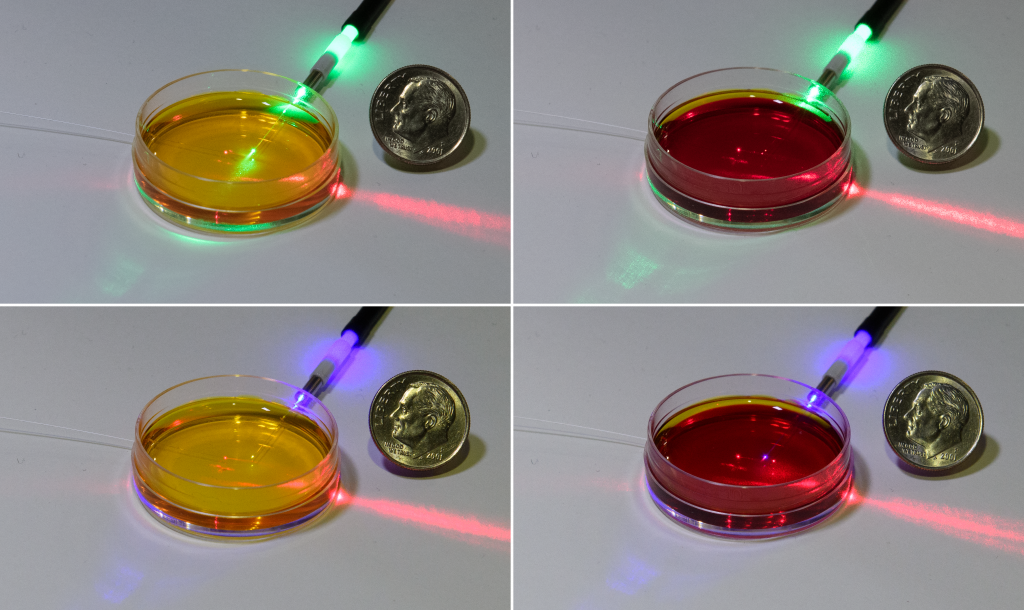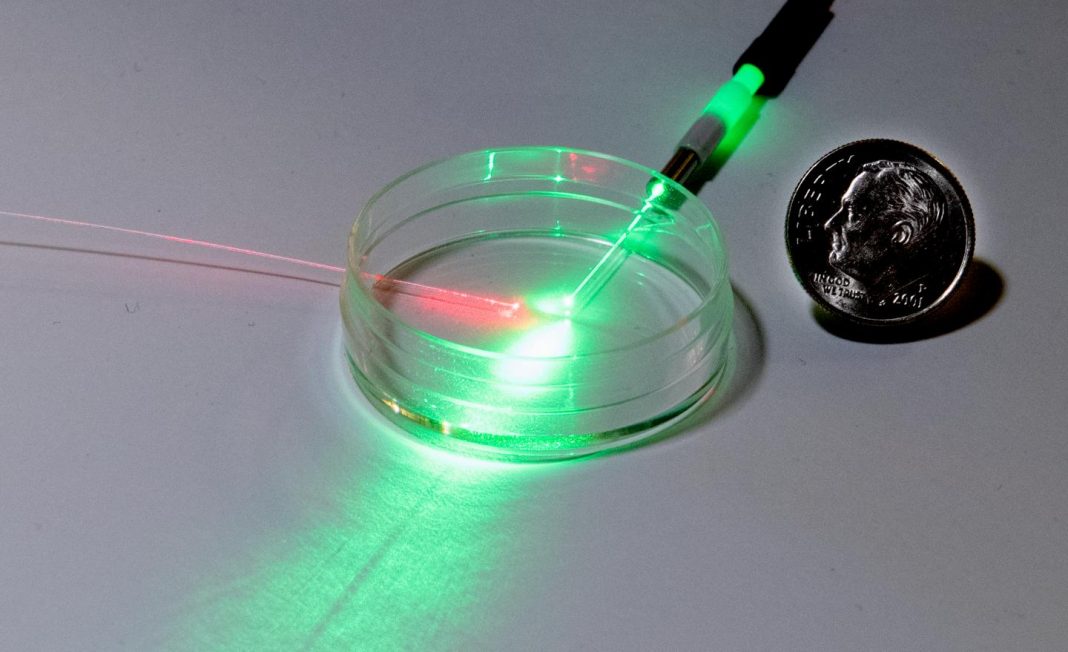Researchers at the National Institute of Standards and Technology (NIST) report the development of a new kind of sensor to study tissue growth in the lab. Their paper (“A photonic pH sensor based on photothermal spectroscopy“), published in Sensors and Actuators B, describes a small sensor that uses a light-based signal to measure pH, an important property in cell-growth studies.
The same basic design could be used to measure other qualities such as the presence of calcium, cell growth factor, and certain antibodies, according to team members who say that unlike conventional sensors, this measurement method could be used to monitor the environment in a cell culture long-term—for weeks at a time—without having to disturb the cells regularly to calibrate the sensing instruments.
“Although the determination of pH is a standard laboratory measurement, new techniques capable of measuring pH are being developed to facilitate modern technological advances. Bio-industrial processing, tissue engineering, and intracellular environments impose unique measurement requirements on probes of pH. We describe a fiber optic-based platform, which measures the heat released by chromophores upon absorption of light. The optical fibers feature fiber Bragg gratings (FBG) whose Bragg peak redshifts with increasing temperature,” the investigators wrote.

Watching properties of the tissue in real-time as they slowly change, over days or weeks, could greatly benefit tissue engineering studies to grow teeth, heart tissue, bone tissue, and more, noted NIST chemist Zeeshan Ahmed, PhD.
“We want to make sensors that can be put inside growing tissue to give researchers quantitative information,” Ahmed said. “Is the tissue actually growing? Is it healthy? If you grow a bone, does it have the right mechanical properties or is it too weak to support a body?”
The work could have benefits beyond tissue engineering, into studying the progression of diseases such as cancer. “What these sensors could give people is real-time information about tissue growth and disease progression,” pointed out American University chemist and NIST guest researcher Matthew Hartings, PhD.
Conventional sensors give researchers a series of snapshots without showing them the path between those points, Hartings explained. But photonic sensors could provide scientists with continuous information, the equivalent of a GPS navigation app for disease.
The researchers say that according to their tissue engineering collaborators, the new photonic sensors could provide useful information for a range of biological systems being studied, particularly the growth of heart and bone cells.
For their next round of experiments, already underway, the NIST researchers are using another pH-sensitive dye called phenol red. In addition, they are working to encapsulate the dye in a plastic coating around the fiber itself so that it does not interact with the cell medium. The team is also conducting its first test of the system in a real cell culture, with help from NIST colleagues who specialize in tissue engineering.
Future plans include measuring quantities beyond pH, which would simply require swapping out phenol red for a different dye sensitive to whatever property researchers want to measure. And much further in the future, Ahmed hopes the measurement scheme could potentially be used to monitor the growth of tissue in a real person’s body.
“The long-term goal is being able to put implantable devices into people where you’re trying to grow bones and muscles, and then hopefully over time the sensors could be designed to dissolve away and you wouldn’t even have to go back in and remove them,” said Ahmed. “That’s the ultimate dream. But baby steps first.”


